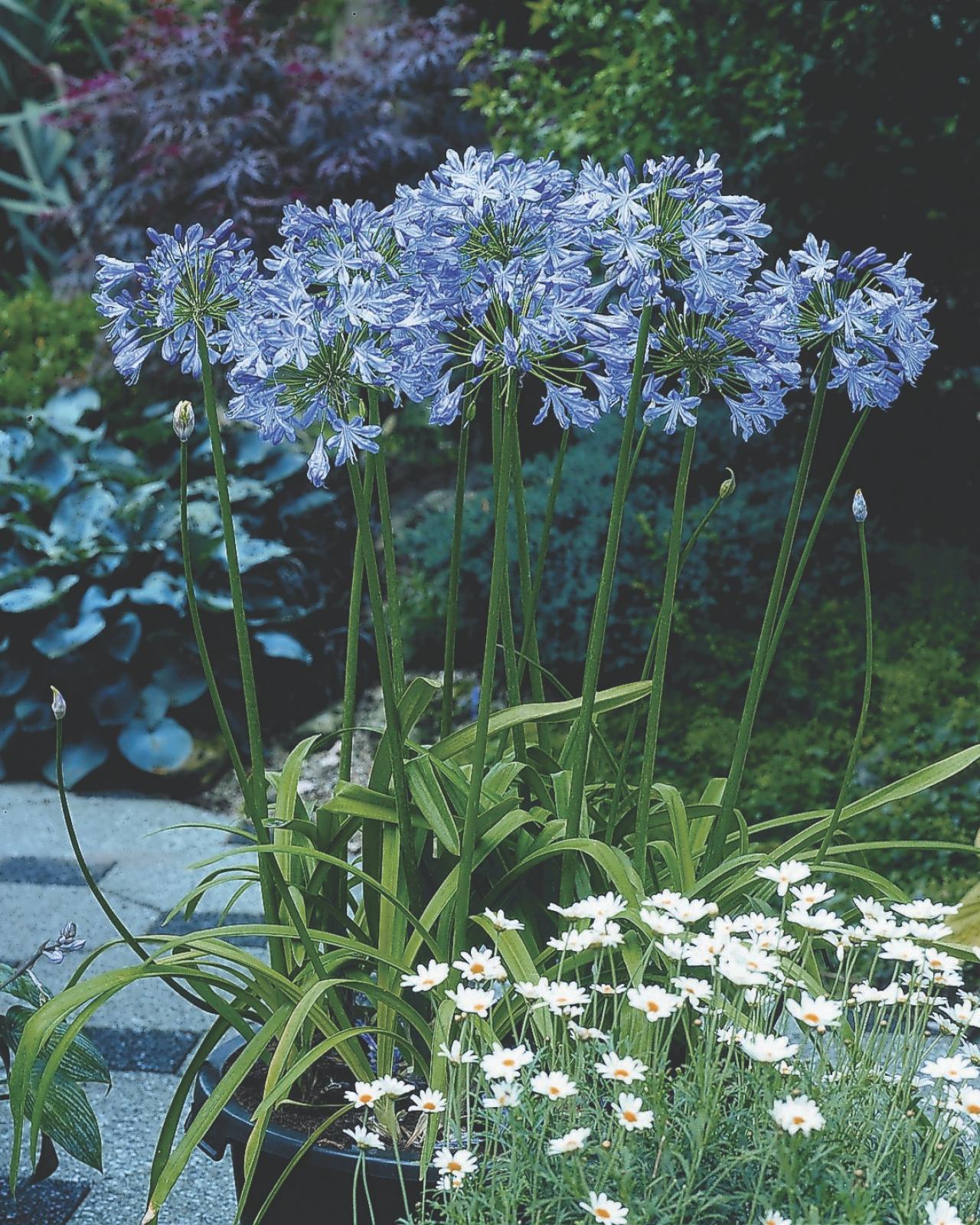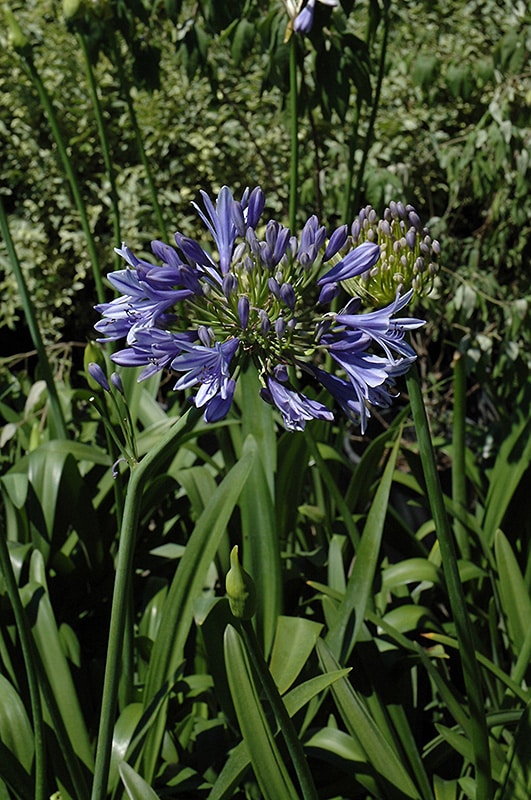How to Plant and Maintain Agapanthus in Your Garden
How to Plant and Maintain Agapanthus in Your Garden
Blog Article
Releasing the Secret to Successful Agapanthus Cultivation: Advice for a Flourishing Yard
In the world of horticulture, growing agapanthus successfully needs a critical technique that includes different facets of plant treatment. By comprehending the subtleties of agapanthus farming, one can produce a setting where these plants prosper and bloom perfectly.
Growing Agapanthus: Best Practices
When planting Agapanthus, correct soil prep work is crucial for ensuring effective development and advancement of these beautiful blossoms. Agapanthus, typically referred to as Lily of the Nile or African lily, prospers in well-draining dirt with a slightly acidic to neutral pH degree - Agapanthus. Before growing, it is essential to modify heavy clay dirts with natural matter such as compost or peat moss to boost drainage and supply important nutrients for the plants
To grow Agapanthus, choose an area that receives complete sunshine to partial shade, as this will promote healthy and balanced growth and bountiful flowering. Dig an opening twice the diameter of the plant's origin round and put the Agapanthus at the very same depth it was previously growing. Delicately backfill the hole with soil, weighing down securely to eliminate any type of air pockets around the origins.
Water the freshly grown Agapanthus completely and remain to maintain the soil equally moist, specifically during the plant's energetic growing period. Agapanthus. Using a well balanced fertilizer once a month can better sustain the plant's development and blooming. By adhering to these ideal methods for growing Agapanthus, you can create a magnificent display of these captivating flowers in your garden
Ideal Soil Conditions for Agapanthus
For optimum growth and flowering success of Agapanthus plants, making sure the dirt conditions are perfect is vital. Agapanthus thrives in well-draining soil with a slightly acidic to neutral pH level ranging from 6.0 to 7.0. This kind of dirt permits sufficient water drainage, preventing waterlogging which can bring about root rot. To boost soil water drainage, take into consideration including natural issue such as compost or peat moss when preparing the planting website. In addition, Agapanthus likes soil that is rich in nutrients, so including a balanced plant food throughout the expanding season can promote healthy and balanced development and vivid blossoms.

Watering and Fertilizing Tips
To guarantee healthy growth and vibrant blooms, proper watering and feeding strategies are essential for effective Agapanthus farming. Agapanthus plants profit from routine watering, particularly during the expanding season.
When it comes to fertilizing Agapanthus, a balanced plant food with equivalent parts nitrogen, phosphorus, and potassium can be applied in the spring to promote healthy growth and blooming. Slow-release plant foods are perfect for offering nutrients gradually over a prolonged duration. Prevent over-fertilizing, as this can result in excessive vegetation development at the expense of blossoms.
Furthermore, anchor integrating organic issue like garden compost right into the dirt can enhance nutrient degrees and enhance dirt directory structure, assisting in the overall health of the Agapanthus plants. By adhering to these watering and fertilizing pointers, garden enthusiasts can ensure their Agapanthus plants grow and create sensational screens of flowers.
Trimming and Deadheading Techniques
Correct pruning and deadheading strategies play a critical function in maintaining the health and wellness and visual appeals of Agapanthus plants, matching the important methods of watering and fertilizing for successful growing. Pruning Agapanthus involves getting rid of spent blossom heads, yellowing or dead fallen leaves, and total shaping of the plant to advertise far better growth. Deadheading, the process of getting rid of discolored flowers, not just improves the plant's appearance yet likewise encourages additional flowering.
When deadheading Agapanthus, it is recommended to clip off the blossom stem at the base utilizing sharp, tidy shears. This process redirects the plant's energy from seed production back right into root and foliage development, promoting a healthier and more durable plant. Normal deadheading can extend the blooming duration of Agapanthus and avoid self-seeding, which can cause overcrowding.
In regards to trimming, Agapanthus typically take advantage of a light trim after flowering to clean the plant and motivate fresh growth. Reducing back the spent blossom stems and removing any type of dead Our site or broken vegetation aids maintain the plant's vigor and overall look. Nonetheless, it is vital to prevent reducing into the crown of the plant, as this can deteriorate its wellness.

Protecting Agapanthus From Pests and Diseases
Implementing effective insect and condition management methods is crucial to securing the health and wellness and vitality of Agapanthus plants in cultivation. One typical insect that affects Agapanthus is the Agapanthus borer, a caterpillar that tunnels right into the plant, triggering damage to the blossoms and leaves.
Along with parasites, Agapanthus are vulnerable to conditions such as origin rot and fungal leaf places. These concerns can commonly be stopped by making sure proper drain and preventing overwatering. If indicators of disease show up, impacted components of the plant need to be quickly gotten rid of to stop more spread. Fungicides may likewise be used as a treatment procedure, following the supplier's guidelines very carefully. By staying vigilant and resolving pest and illness concerns immediately, garden enthusiasts can help their Agapanthus flourish and grow.

Verdict
To conclude, successful growing of agapanthus calls for appropriate growing techniques, suitable soil problems, sufficient watering and feeding, regular trimming and deadheading, and protection from illness and parasites. By adhering to these tricks and suggestions, garden enthusiasts can ensure a growing yard full of stunning agapanthus flowers. Agapanthus. Bear in mind to preserve constant treatment and focus to detail to promote the health and wellness and durability of these magnificent plants
When growing Agapanthus, appropriate dirt preparation is vital for making certain effective development and development of these gorgeous flowers.Water the recently grown Agapanthus extensively and proceed to maintain the dirt equally wet, especially during the plant's active growing period.For optimum development and growing success of Agapanthus plants, making certain the dirt problems are excellent is crucial. When transplanting or planting Agapanthus, guarantee the soil is well-prepared to offer the required foundation for the plants to establish themselves efficiently. One common parasite that affects Agapanthus is the Agapanthus borer, a caterpillar that tunnels into the plant, causing damages to the flowers and leaves.
Report this page